Tourist Places In GarhbetaPreviewIn the Paschim Medinipur district of West Bengal, the Medinipur Sadar subdivision, Garhbeta, is a community development block that serves as an administrative entity. It is situated along the Shilabati's bank. Gar is the Bengali word for a nullah. A tiny nullah bounded the previous town's perimeter. This region's economy is based on agriculture. The main crops include various vegetables, potatoes, wheat, and rice. Some peasants work in weaving, fishing, and hawking. Few residents of the community work for the government or are educators 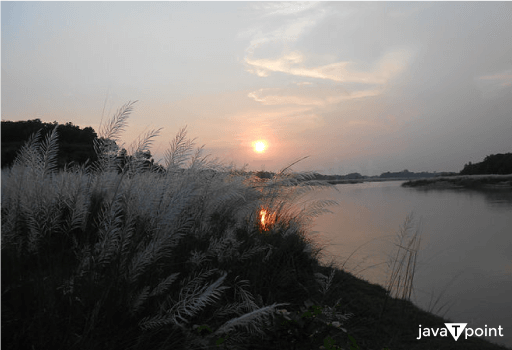
Although Garhbeta is home to many temples, the Sarva Mangala Temple deserves special attention. Its entrance opening toward the north is unique. Tradition has it that a yogi was drawn to this location while walking through the dense jungle during the reign of King Vikramaditya of Ujjain. With the help of his mantras, he instantly created a temple dedicated to Sarva Mangala Devi. Top Tourist Places to Visit in GarhbetaGongoni DangaA natural canyon called Gongoni Danga, often written Gangani Danga, may be found in West Bengal, India, near Garhbeta. Red rocky soil that leads to the Shilabati Valley or "canyon floor" is present when one reaches the region. The majestic laterite cliffs that float above may be seen. Over millions of years, a rugged ravine-filled landscape of ominous splendor has been carved and chiseled by wind and water. The term Gongoni Danga or Gongoni Khola is used locally. The Grand Canyon of West Bengal is the nickname the more creative city dwellers gave to it. 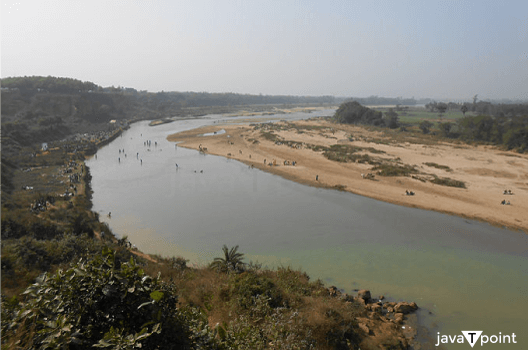
The local government has constructed stairs so tourists can descend the canyon that the river has cut out over time, which is many stories deep. The colors shift to various shades of yellow as one falls. When it's dry out, the river doesn't have much water, but when it rains, it fills up many of the deeper sections of the canyon alleyways. As one descends farther into the canyon, the real sizes and forms of seemingly intangible objects begin to take on physical form. Some of the pieces resemble lions, while others resemble pagodas. A sizable cave has a fascinating legend attached to it. The Pandavas, the protagonists of the Indian epic Mahabharata, are said to have landed here during their exile, according to local mythology. Along with their mother, Kunti, the five boys came. A monster named Bakasura plagued the country. Every day, a volunteer from one of the local villages had to supply the terrifying demon with the flesh he needed to survive. 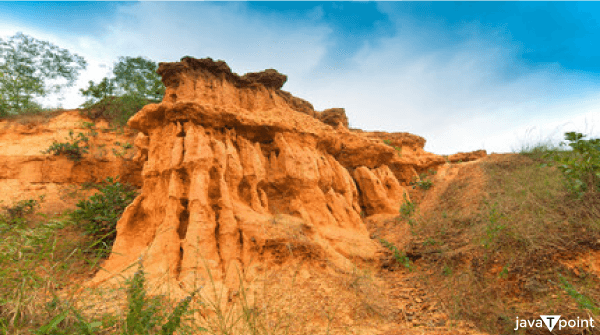
The Brahmin family, where the Pandavas were residing, was the one who had to comply with the demon's request. Bhima consented to attend when Kunti asked him to. The mythical warrior eventually defeated the monster after several days of a bloody struggle. According to some villagers, Gangani Danga was created due to the phrase, "And that earth-rattling battle left the land all wrinkled and crumpled." Due to its stunning scenery, the area has gained popularity as a tourist destination. People are drawn to the lovely canyon-like landforms. Sarbamangala MandirEven though Garhbeta is home to many temples, the Sarva Mangala temple deserves special attention. Its entrance opening toward the north is unique. A yogi is said to have been drawn to this location while traversing the forest's depths during the reign of Maharaja Vikramaditya of Ujjain. Through his mantras, he instantly manifested a Sarva Mangala Devi temple. Knowing the power of this, Maharaja Vikramaditya traveled to Garhbeta and engaged in a tantric sadhana while seated on a corpse. 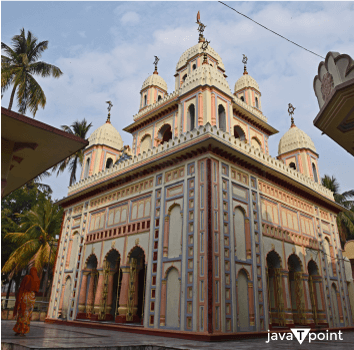
The Maharaja's sadhana delighted Devi, who bestowed upon him extraordinary abilities and the aid of Tal & Betal. The Maharaja requested Tal and Betal to shift the temple to face the north to put the spiritual power the Devi had given him to the test. According to legend, Tal and Betal accomplished this, giving rise to Garhbeta. In the sixteenth century, the bag ruler of Garbeta, Raja Nripoti Singh, built one of the region's most revered and well-known temples. The idol of Maa Sarbamangala sits within the building known as the Sarbamangala Temple. Many people come here to perform puja for Maa from different parts of the city. Nandalal TempleIn the latter half of the seventeenth century, Nandalal Temple was constructed. It is a laterite temple designed in the "Eka-Ratna" style. The temple, built on a small platform, has a square foundation and a curving roof in the Bengali "chala" style. On the roof stands a lone tower, or "share." It shares structural similarities with the Radha Madhav temple. As a result, the innermost sanctuary, where the idol is kept, is surrounded by porches on all four sides, and the two neighboring sides of the temple each have three arched entrances. On its walls, very little bas-relief or ornamentation is still visible. There used to be stucco work covering stone carvings of various patterns and figures on the wall, which has mainly been wiped out. 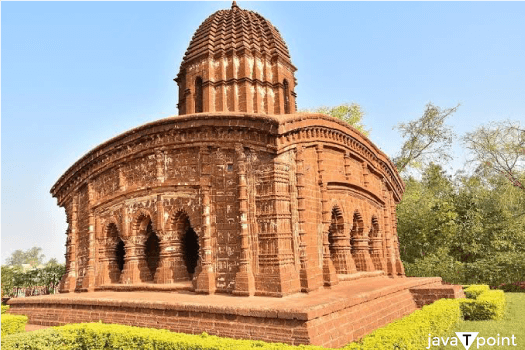
Nandalal Temple, one of Bishnupur's seven Ek-Ratna temples, is encircled by a verdant garden. The identity of the temple's builder needs to be discovered. The south-facing temple features a square floor plan with a solitary tower resting on a curving roof typical of Bengal-style architecture. The lower relief of the front facade's arches has relatively little decoration. The temple is empty at the moment and has no idol deity inside. Nandalal Temple is a historic temple located near Dalmadal Para in the West Bengal town of Bishnupur, 2 kilometers from the Bishnupur Bus Stand. It is one of the major tourist destinations in Bishnupur and is close to the Jor Mandir Temples, which are well-known West Bengal historical sites. From Garhbeta, it is located 40 minutes away. Radha Shyam TempleKing Chaitanya Singha built the Radha Shyam Temple at Bishnupur, which dates back to 1758. The Jorbangla Temple, an ancient shrine dedicated to Lord Krishna, lies nearby. The dome-shaped Radha Shyam Mandir is enclosed by a boundary wall within an enclosure. The temple is renowned for its beautiful architecture and great religious value, making it a well-liked tourist destination in Bishnupur. The Archaeological Survey of India (ASI) properly keeps the temple because of its historical importance and heritage value. 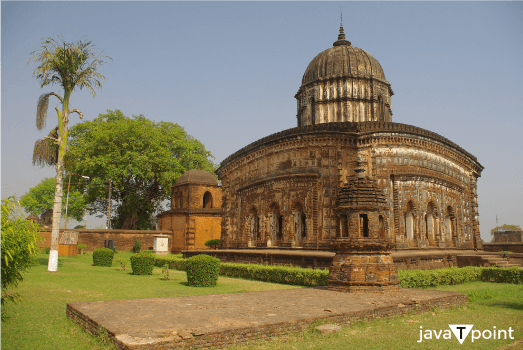
The Radha Shyam Temple is regarded as the living shrine in the area and houses pictures of Lord Krishna along with Radha in the sanctuary. The sanctuary contains pictures of Nityananda, Chaitanya, Radha, and Shyam (Lord Krishna). There is another shrine next to the temple with the statues of Lord Jagannath of Puri, Nityananda, and Chaitanya. Numerous people travel to Bishnupur throughout the year to see this lovely temple; some come to pay respects, while others come to marvel at its wonderful splendor. The renowned terracotta temple, Radha Shyam Temple, is located at Bishnupur, West Bengal, 2 kilometers from the bus station. It's one of the most well-liked temples in Bishnupur, and it's close to Jor Bangla Temple. From Garhbeta, it takes 42 minutes to get there. Rasmancha is where visitors may purchase admission tickets for this temple and the other Bishnupur temples. Otherwise, guests are not permitted to enter the shrine. Joypur ForestIf you enjoy visiting dense woods with a wide range of flora and wildlife, Joypur Forest is certainly the place to go. Visit the ancient Bishnupur, a neighboring town, for its stunning Kansabati Dam and tranquil Mukutmanipur Lake, as well as the terracotta temples from the 17th century. There are lovely resorts here, surrounded by gardens and forests. You should spend your weekends at Joypur Forest during the rainy season! The landscape suddenly changes, with thick jungle lining both sides of the road just after Joypur Village. Visitors may access Samudra Bandh, a sizable body of water, after about a 700-meter drive. From here, take a right turn to reach the Joypur watchtower. Because of the observatory's unpredictable hours, getting inside to get a decent aerial view depends on chance. 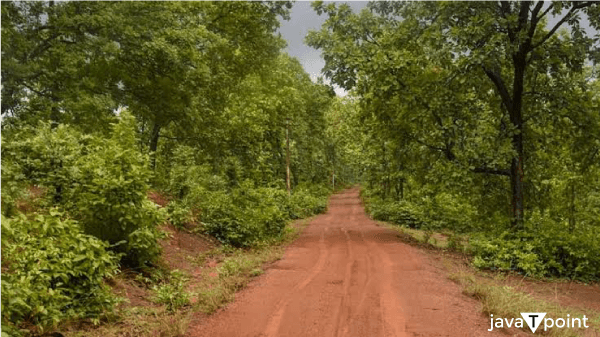
When you look for adventure, that turns into a delight. Meeting new people and enjoying their delicacies might make you feel really satisfied. Our daily lives now include going to metros. It is advised to try some unusual country holidays in Bankura Joypur Forest. This area is regarded as the home of the jungles. The Joypur Forest Resort offers handicrafts, historical significance, and comfort cuisine, captivating a stay there. The resort is in the middle of a tranquil, verdant forest. Being alone on a walk in the dark with cold air may change your life for a while. The resort features a handicraft store with fabric, silk sarees, and other handicrafts. One of the store's greatest items is terracotta. 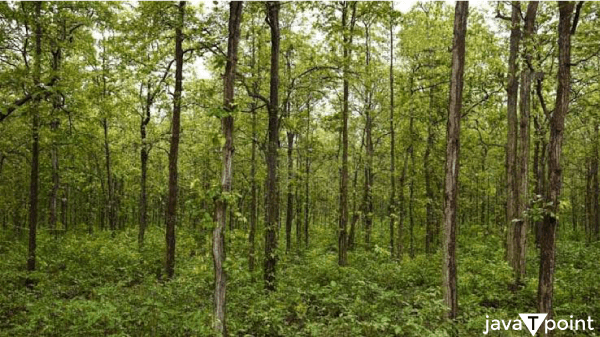
It is risky to venture inside to reach the tower; thus, it should be avoided during or after a downpour. Although the trip through this jungle trail is beautiful, one should start before 4 o'clock in the afternoon. Seeing a deer, fox, or even an elephant is possible. This is an excellent spot for birdwatchers to search for avian visits. The route goes to a defunct runway built during the British era after crossing a railroad. RasmanchaLocated in Bishnupur, West Bengal, India's Bankura district, the Rasmancha Temple is a historic building. In 1600 CE, Mallabhum ruler Hambir Malla Dev ordered it. This temple measures 24.5 meters in length, 12.5 meters in width, and 12.5 meters in height. The temple's upper portion is built of bricks, while the foundation is composed of laterite stone. It is an outstanding square tower with three vaulted-roof corridor galleries surrounding a modest shrine in the center built on a laterite plinth. During the Ras festival, idols from various temples are displayed in the structure. All of Bishnupur town's Radha Krishna statues used to be brought here for public adoration while celebrating the Vaishnava Ras festival. 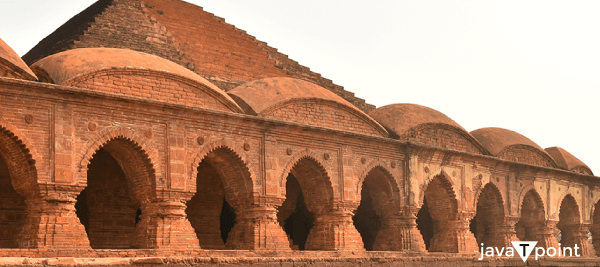
Rasmancha, one of the country's first brick temples and a unique example has an exceptional architectural expression. Rasmancha was developed primarily to honor the "Ras Festival." Using bricks in Rasmancha's top construction makes it one of the building's most intriguing aspects. Bricks are also used to construct the arches encircle the temple's only room. The fact that Rasmancha's temple only contains one room, the sanctum sanctorum, is one of the temple's most intriguing features. This room features a tall tower and is flanked by turrets that resemble Bengali huts. Several large cannons from the Malla era are housed in a corridor encircles the room. Kalachand TempleRaghunath Singha, the Malla ruler, erected the Kalachand temple in 1656 AD on a small platform made of laterite stones. Rust-colored laterite was used to construct this "Eka-Ratna," or "single-towered" temple. The temple stands 9.2 meters above the platform and has a square foundation measuring 11.1 meters by 11.1 meters. The temple has a "chala"-style roof, which is customary in Bengal. Around the main shrine is a circumambulatory hallway. The building has a'sikhara' or tower (Ratna) atop the curving roof and three arched entrances on each of its four sides. This is most likely Bishnupur's first "Eka-Ratna" temple. On the ' Sikhara's' top, there is an 'amlaka'. The temple's frontal face depicts legendary tales from the "Krishna Leela" and numerous modern-day occurrences. 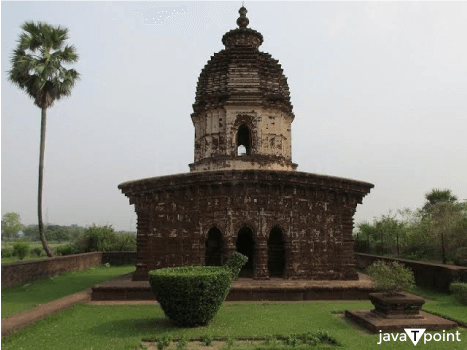
A shikhara with a sloping roof transcends the monument and the temple on square podiums. Bas-reliefs in the anterior fascia show events from the Krishna Lila, the Puranas, and modern life. Additionally, a brick double compound wall that once surrounded this Ekaratna temple is now in ruins. These temples include intricate representations of themes taken from the Puranas, according to architect Priyanka Mangaonkar Vaiude, who extensively researched the Bishnupur temples for their architectural elements. As a result, these temple decorations served as a route for educating the general public about our history and traditions. The majority of the ornaments are designed in a Gupta style. The largeness of ideas, dramatic intensity, and lifelikeness of the images on the bricks and plaques represent the vividness of the wall paintings & frescoes, whose scarcity is made up for by these images. Wrapping it UpA day might easily be spent exploring the little Indian city of Garhbeta. This town hasn't a few activities to engage in or sights to see. Additionally, there are fewer lodging alternatives because it's a tiny town. Before leaving for the nearby cities, people frequently think about making a brief stop there. You may take a short break from your travels and grab a fast bite in this location.
Next TopicTourist Places in Jamunamarathur
|
 For Videos Join Our Youtube Channel: Join Now
For Videos Join Our Youtube Channel: Join Now
Feedback
- Send your Feedback to [email protected]
Help Others, Please Share









